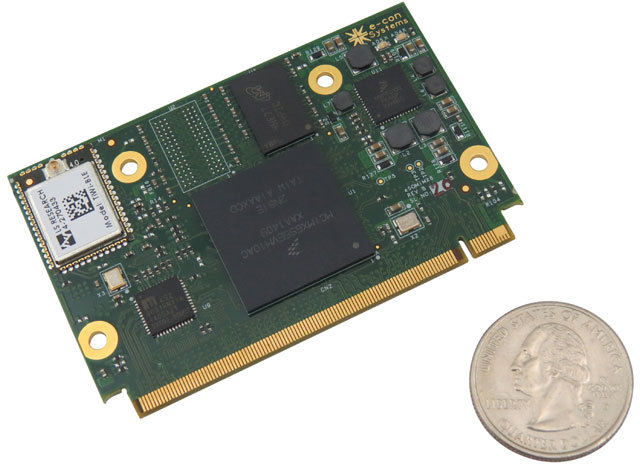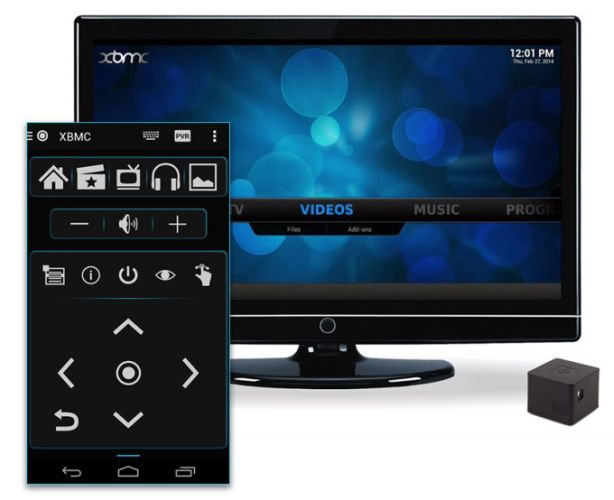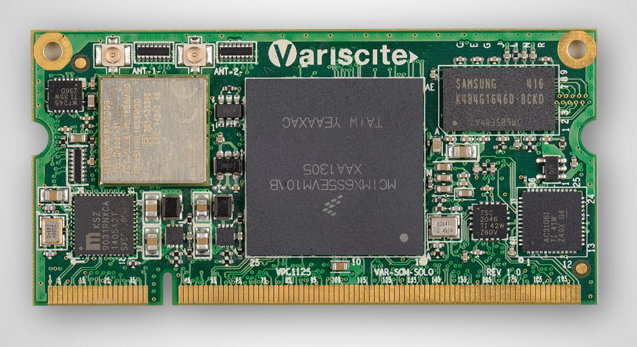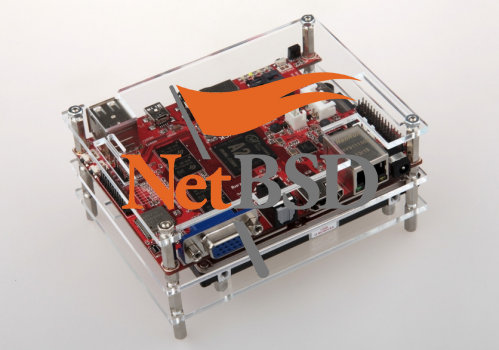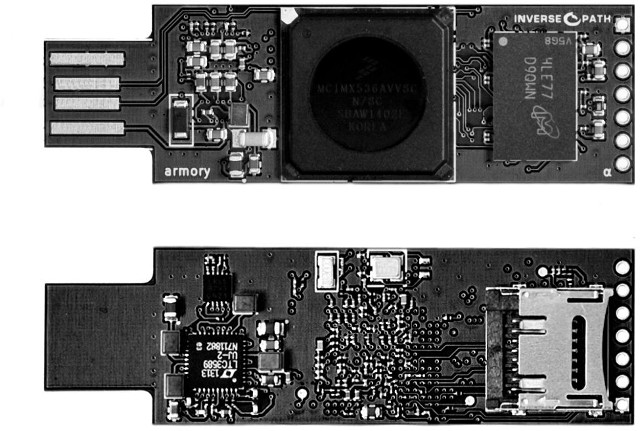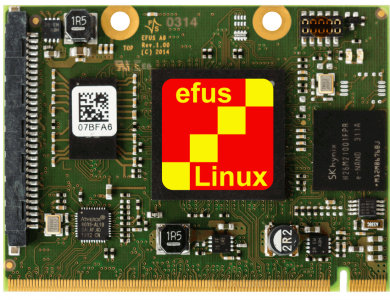Linus Torvalds released Linux Kernel 3.18 last Sunday: It’s been a quiet week, and the patch from rc7 is tiny, so 3.18 is out. I’d love to say that we’ve figured out the problem that plagues 3.17 for a couple of people, but we haven’t. At the same time, there’s absolutely no point in having everybody else twiddling their thumbs when a couple of people are actively trying to bisect an older issue, so holding up the release just didn’t make sense. Especially since that would just have then held things up entirely over the holiday break. So the merge window for 3.19 is open, and DaveJ will hopefully get his bisection done (or at least narrow things down sufficiently that we have that “Ahaa” moment) over the next week. But in solidarity with Dave (and to make my life easier too 😉 let’s try to avoid introducing any _new_ […]
e-con Systems Unveils eSOMiMX6 SoM based on μQ7 Form Factor, and Ankaa Development Kit
QSeven is one of the many standards for system-on-modules, and it defines both Qseven (Q7) 70x70mm modules, and smaller μQSeven (μQ7) 70x40mm modules. While there are quite a few SoMs following the larger form factor, few modules are based on micro Q7, and e-con Systems eSOMiMX6 has just launched one of these tiny modules with eSOMiMX6 system-on-module powered by Freescale i.MX6 processors, as well the corresponding Ankaa development kit comprised of the SoM and a baseboard. eSOMiMX6 module specifications: SoC – Freescale i.MX6 single, dual or quad Cortex A9 processor @ 800MHz to 1.2 GHz with Vivante GPUs System Memory – 256MB/512MB (Solo only), 1GB (default), or 2GB (dual/quad only) LVDDR3 RAM Storage – 4GB (default) to 64GB eMMC flash, 2MB SPI NOR flash, and SD/MMC + SATA II interfaces via MXM connector Display / Video Output: HDMI up to 1920 x 1080 Dual channel 24-bit LVDS 24-bit LCD RGB MIPI […]
CuBoxTV is a $100 OpenELEC TV Box Powered by Freescale i.MX6 Quad SoC
Last year, Solidrun launched their Cubox-i mini PCs powered by Freescale i.MX6 single, dual or quad core processor, and running Debian, OpenSUSE, Android 4.4, or various XBMC based Linux distributions. The company has now announced a new product called CuboxTV, that on surface looks similar to their Cubox-i4Pro mini PC with a quad core processor, but instead of running Linux desktop distributions, or Android, it’s pre-loaded with OpenELEC Linux distribution running Kodi 14. CuboxTV specifications: SoC – Freescale i.MX6 Quad with four Cortex A9 core up to 1GHz, and Vivante GC2000 3D GPU System Memory – 1GB SDRAM @ 1066 MHz Storage – 8GB internal storage + micro SD interface Video Output – HDMI 1.4b, 3D support Video Decoders – MPEG-4 ASP, XVID, H.264 HP, H.263, MPEG-2 MP, MJPEG BP, VP8, Sorenson-H263. Video Encoders – MPEG-4 SP, H.264 BP, H.263, MJPEG BP Image Codecs – JPEG, BMP, GIF, PNG. Audio […]
Variscite VAR-SOM-SOLO is a Tiny System-on-Module Based on Freescale i.MX6 Solo Processor
Freescale will soon announce i.MX6 SoloX dual core processor with ARM Cortex A9 and M4 cores, and dual-port gigabit Ethernet, but companies still design and manufacture new Freescale i.MX6 Solo/Dual/Quad based hardware for their mostly industrial customers. Variscite has recently launched a smaller version of their VAR-SOM-MX6 system-on-module called VAR-SOM-SOLO powerd by Freescale i.MX6 Solo processor with up to 1GB RAM, up to 512MB NAND flash for boot code, up to 64GB eMMC flash for storage, and TI WiLink8 module with Wi-Fi and Bluetooth Smart. Variscite VAR-SOM-SOLO technical specifications: SoC – Freescale i.MX6 single core ARM Cortex-A9 core @ 1.0GHz with Vivante GC 880 + Vivante GC 320 GPU, and VPU supporting 1080p30 H.264 encode and decode. System Memory – 256MB to 1GB DDR3 RAM Storage – 128MB to 512MB NAND flash for boot code, 4GB to 64GB eMMC flash, and SD/MMC via edge connector Video Output / Display Interfaces: […]
NetBSD 7.0 To Support Multi-Core ARM Processors from Allwinner and Freescale
NetBSD is an open source Unix-like Open Source operating system running on a wide range of platforms, from servers and desktop systems to embedded devices. The operating system has supported ARM since 1996, with more recent ports for ARM Cortex A8 and Raspberry Pi, but until recently it did not support SMP (Symmetric multiprocessing) to support more than one core. But NetBSD has now fixed this “anomaly” and the following Allwinner A20/A31 and Freescale i.MX6 boards are now supported: Banana Pi (BPI) Cubieboard 2 (CUBIEBOARD) Cubietruck (CUBIETRUCK) Merrii Hummingbird A31 (HUMMINGBIRD_A31) CUBOX-I NITROGEN6X You can give it a try on Allwinner boards by creating an SD card following instructions on NetBSD / Allwinner Wiki. There does not seem to be documentation for the Freescale boards yet. If Allwinner documentation is up-to-date, this is a headless image, as framebuffer, HDMI, etc… are still in to TODO list, but Gigabit Ethernet and […]
USB Armory is an Open Source Hardware Freescale i.MX53 Dongle for Security Applications
Most computers-on-a-stick come with an HDMI port, and a few USB ports, but Inverse Path’s dongle is quite different. USB Armory is a flash drive sized computer powered by Freescale i.MX53 Cortex A8 processor with only a USB port and a micro SD slot, that targets security applications such as mass storage devices with automatic encryption, virus scanning, host authentication and data self-destruct, VPN routers, electronic wallets, password managers, portable penetration testing platforms, and so on. USB Armory specifications: SoC – Freescale i.MX53 ARM Cortex-A8 @ 800Mhz with ARM TrustZone System Memory – 512MB DDR3 RAM Storage – microSD card slot USB – 1x USB host port. USB device emulation: CDC Ethernet, mass storage, HID, etc. Expansion Header – 5-pin breakout header with GPIOs and UART Misc – customizable LED, including secure mode detection Power – 5V via USB (<500 mA power consumption) Dimensions – 65 x 19 x 6 […]
Linux 3.17 Released
Linus Torvalds announced the release of Linux Kernel 3.17 on Sunday: So the past week was fairly calm, and so I have no qualms about releasing 3.17 on the normal schedule (as opposed to the optimistic “maybe I can release it one week early” schedule that was not to be). However, I now have travel coming up – something I hoped to avoid when I was hoping for releasing early. Which means that while 3.17 is out, I’m not going to be merging stuff very actively next week, and the week after that is LinuxCon EU… What that means is that depending on how you want to see it, the 3.18 merge window will either be three weeks, or alternatively just have a rather slow start. I don’t mind getting pull requests starting now (in fact, I have a couple already pending in my inbox), but I likely won’t start processing […]
F&S Elektronik Systeme Introduces eFus A9 Industrial Computer Modules Powered by Freescale i.MX6 SoC
F&S Elektronik Systeme, a German embedded systems company, has announced their efus A9 Computers-on-Module (CoM) based on Freescale i.MX6, are now in mass production. The CPU comes in two variants A9V2 for i.MX6 Solo, and A9V3 with i.MX6 DualLite, both of which are certified for automotive and industrial applications, and support commercial, extended, and industrial temperature ranges. eFuse A9 computer-on-module specifications: SoC – CPU Freescale i.MX6 Solo (eFus A9V2) or DualLite (eFus A9V3) @ up to 1.2 GHz + Vivante 2D and 3D GPUs System Memory – 512MB (Up to 1GB RAM) Storage – 256 MB NAND flash (Up to 1GB), 2 GB eMMC (eFus A9V3 only. up to 32GB), optional SPI NOR, optional I2C EEPROM Display I/F – 18-bit RGB, 2x 24-bit LVDS, and DVI Other interfaces available via 230 pins MXM-2 edge connector: 2x SD card I/F 1x Gigabit Ethernet 1x USB Host, 1x USB Device 2x CAN […]



